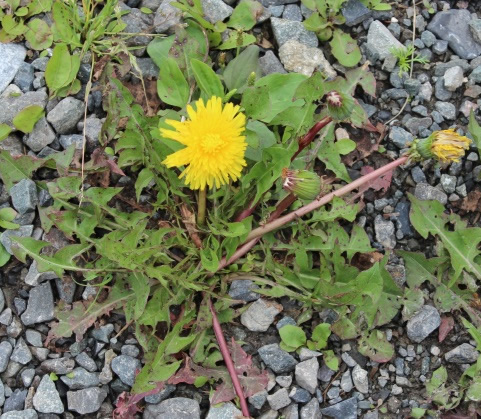Dandelion

Botanical Name: Taraxacum ssp.
Common Name: Dandelion
Other Names: Saalalraq (One that sleeps)
Found in: Throughout Alaska.
Physical Characteristics: The cheery yellow composite blossoms and jagged dent-de-lion (lion toothed) leaves are readily recognized worldwide. Stems, when broken, yield a milky sap. Taproots can penetrate the earth to a depth of 20 feet.
Nutritional Value: generous source of Vitamins A, B, C, and D and various minerals. (It is also useful for liver issues like hepatitis and jaundice and is a natural diuretic.)
Parts of the plant used: leaves
When plant should be gathered: Pick dandelion salad greens in very early spring.
Plant applications: food
Reported Benefits: food
Preparation/Processing: Food: Traditionally, the root of the dandelion has been used to make a tea that was used to treat liver, kidney, and bladder ailments. It can also be used as a tonic for digestive problems or constipation. If the root is dried, it can also be used as a weak coffee substitute. Recent experiments have shown that the root is hypoglycemic and can be used as a weak antibiotic against yeast infection. The leaves and flowers are also rich in vitamins A and C. All parts of the flower can be used as food.
